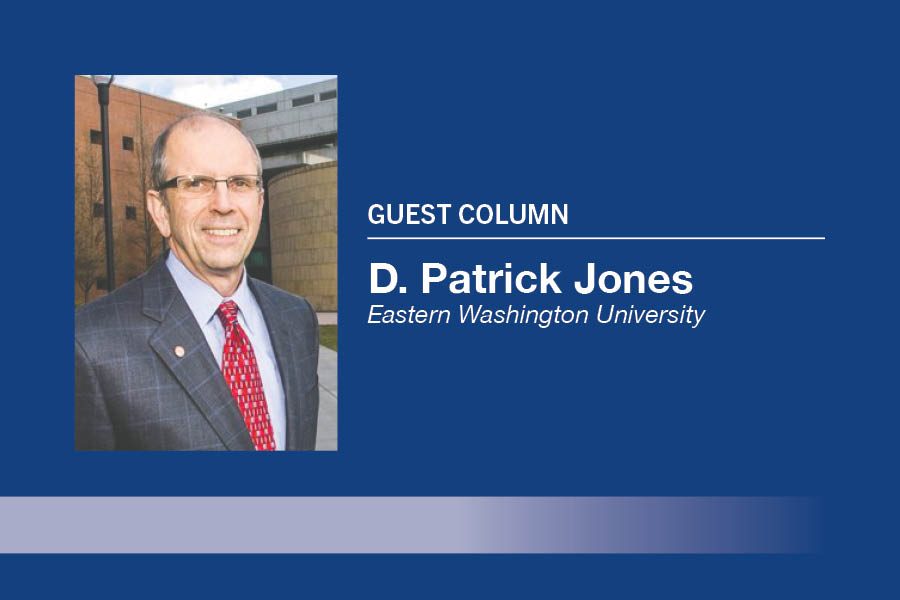
Home » Growing presence of older adults will make a mark on Tri-Cities
Growing presence of older adults will make a mark on Tri-Cities

April 14, 2025
For years, the Tri-Cities have enjoyed the reputation as the youngest metro area in the state. The Benton-Franklin Trends indicator covering median age and below clearly shows how the “middle age” here has been lower than in the nation and the state. Over the past 15 years, the gap between the two counties and the U.S. has typically run four to five years. The same holds true for the gap between the metro area and Washington.
If we divide the population into four groups, it is apparent that two age groups drive this result, as Trends data reveals. The share of youth (0-17 years) is much larger here than statewide. Over the past decade, the average share of the youngest of the four groups was 28% vs. 22% in the state. At the other end of the age spectrum, the average share of older adults (65 years and up) was smaller than the Washington share: 14% vs. 16%.
Not surprisingly, the metro share obscures a stark difference between the two counties. Take older adults. In 2023, its share in Benton County was nearly 17%; in Franklin County, nearly 11%. This yielded an overall share of 15%. While larger than before, the older adult share in Benton County is still a bit below the state average while the share in Franklin County remains far below.
These comparisons will continue to change as the local population ages, if forecasts from Washington State Office of Financial Management (OFM) are correct.
By 2030, OFM forecasts the share of the population taken by older adults to be 19% in Benton County and a bit over 11% in Franklin County. (Judging from recent data, my hunch is that the Franklin County share will be higher by 2030 than forecasted.) The shares of both counties will still lie below the forecasted Washington share of older adults in 2030 – a bit larger than 20%.
More older adults
Regardless of shares, given the forecasted strong population growth OFM foresees for the greater Tri-Cities, many more older adults will be present here by the end of the decade. OFM sees a gain over the 2020-30 interval in Benton County of about 12,500; in Franklin County, of 2,700. The additions of over 15,000 older adults will have implications for important dimensions of life here.
Challenges
Consider health care. Generally, will there be enough providers? Hospital beds? Spots in skilled nursing facilities? And how will providers handle the lower levels of payment from public insurance? If the current use of Medicaid in the greater Tri-Cities continues, about 15% or an additional 2,250 people, will use Medicaid in 2023.
Medicaid patients already face access challenges, as providers usually put a cap on the number of Medicaid patients in their patient panel due to very low reimbursement rates. Will there be enough new providers to offset that rationing? And even the projected 13,000 new Medicare patients may find it difficult to access certain providers, since its reimbursement is often below their costs.
Will builders adapt?
Consider, too, housing. Will the mix of housing by 2030 be attractive to older adults? Generally, this age group downsizes their dwellings as children leave home, with a smaller house and yard footprint. According to the U.S. Census, homes in the greater Tri-Cities are now relatively large. The median number of rooms in 2023 was 5.8. This is nearly 10% higher than U.S. and Washington estimates.
Contrast the local house size with estimates from communities that host many retirees. In Henderson, Nevada, and Bend, the 2023 median was 5.4 rooms. In Palm Desert 5.0. While the Tri-Cities won’t likely be called a retirement community in 2030, the 15,000-plus new residents over 65 will impact the housing market. Will builders adapt? My sense is if they know the outlook, they will.
Bringing in wealth
Finally, consider wealth. While the median household income of older adults here isn’t much different than the general median, older adults will bring substantial wealth to the community. Recent national estimates from Census put the median wealth of older adult households at $403,000, or two-and-a-half times the overall median.
We don’t have data for the greater Tri-Cities, but if income is a guide, median household wealth here shouldn’t be too different from that in the U.S. Nationally, the gap between age groups is likely to continue; so, too, here. And I suspect older adults are not going to take that wealth “with them.”
Between higher spending power and different tastes and preferences, older adults in the greater Tri-Cities will bring shifts in the mix of goods and services.
Year-by-year, these shifts won’t be dramatic, but by 2030 they should be substantial.
D. Patrick Jones is the executive director for Eastern Washington University’s Institute for Public Policy & Economic Analysis. Benton-Franklin Trends, the institute’s project, uses local, state and federal data to measure the local economic, educational and civic life of Benton and Franklin counties.
Retirement Opinion
KEYWORDS April 2025
Related Articles
Related Products





